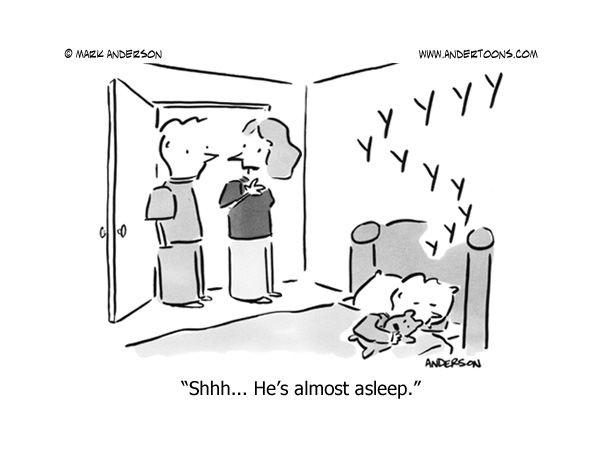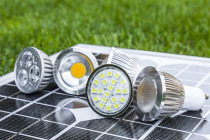We all know how essential quality artificial lighting is to our daily lives. For starters, we’d be hard pressed to get much done without it. And general productivity aside, it also provides convenience: artificial light can be the difference between stubbing your toe on the coffee table and just missing, or between being able to enjoy some evening reading and not.
But what’s rarely considered is the even more subtle impact that this lighting can have even at night, just before or even while you sleep. In fact, the subject has been a point of emphasis for researchers exploring the merits of LED lighting technology that aids and assists circadian rhythms—the natural cycles of sleep and wakefulness in humans.
While research hasn’t yet fully revealed all of the non-visual benefits of lighting, there’s a growing body of evidence, cited in a recent article in LEDs magazine, substantiating the idea that appropriate LED lighting can have a significant impact on people’s long-term patterns of sleep and wakefulness.
For example, warm CCT (Correlated Colour Temperature) lighting—or soft lighting, typically of a yellowish hue—at night can improve the quality of your sleep. It has been found to:
- Encourage the production of melatonin, a hormone closely associated with sleep patterns and whose production is biologically associated with the onset of darkness;
- Induce sleep; and
- Improve restfulness.
Alternatively, cooler CCT lighting—normally a bluish white—has been found to have the opposite effect on these rhythms in the morning, though with equally positive results. The effects, as you might expect, include:
- Suppressed melatonin production;
- Improved alertness; and
- Increased productivity.
The environmental benefits of LED lighting have been known for some time now—it’s energy efficient, and a greener energy alternative than traditional light sources—but these findings appear to suggest other immediately practical benefits for the use of LED fixtures.
After all, a relatively simple solution for healthier sleeps and more productive days sounds like science worth pursuing, doesn’t it?
A Research-Driven Market
Driven by this research, LED lighting companies are hitting the market with innovative LED lamps emphasizing the improvement of people’s sleeping patterns.
Of course, designing LED fixtures that provide the optimal lighting for both morning and evening is challenging, and while many companies have opted for products that feature tunable frequencies to accommodate differing lighting colors, the complexity of the design has been accompanied by a higher price tag.
Some companies, however, have simplified their approach, and begun offering circadian lamps designed and clearly labelled for which kind of lighting they are expected to produce, and in which situations they are best served. General Electric, for example, produces a lamp whose LED lighting is intended to mimic the amber hue of a fire or candlelight, those traditional staples of bedtime lighting. The company has even recommended 30 minutes of exposure to the light as you prepare for bed.
Not to be left behind, LSG has created the aptly titled Good Night and Awake and Alert lamps, each designed to influence how you sleep and wake. According to the company, the products are based on consumer feedback from the people perhaps most qualified to evaluate the benefits of artificial light: astronauts.
Better Days and Longer Nights
The notion that the light we use impacts how alert we are and how we sleep may be unfamiliar, but it’s also somewhat intuitive when considered more closely.
Gary Allen, physicist and LED innovations principal engineer at GE Lighting, captures in a few brief sentences on that thought: “Aren’t we all tuned to the good feelings on a bright and sunny day, or the feelings we have on a gloomy day? Light impacts not only our mood and wellness, but our ability to fall asleep. By changing the timing, amount, spectral quality of light exposure, we can avoid disrupting the body’s natural circadian rhythms.”
Even if you’re not an astronaut or a physicist, the science seems clear: the right kind of LED lighting can do wonders for the quality of your sleep and the productivity of your days.
And whether or not the amber hue of your LED lamp improves your sleep, the fact that its energy efficient technology should at the very least help you rest just a little easier.
About The Author

-
Serial Entrepreneur, Technologist and Inventor.
My objective is to develop useful products that have a net positive effect in the lives of those that use them and the environment that we live in.
CEO of Mission LED Lighting Company Ltd.
- 2017.05.24LED factsWhy Are Cars Switching to LEDs if They’re Too Bright?
- 2017.05.09Be green & saveHow to Easily Replace T8 Fluorescent Tubes With LED
- 2017.03.07Build a better future7 Things About Explosion Proof LED Lighting You Should Know
- 2017.02.28Be green & saveWhy We Love LED Grow Lights (And You Should, Too!)





Charles
More research should be done on the impact of LED lighting technology on sleep patterns.
Reply